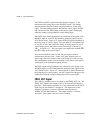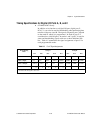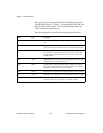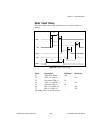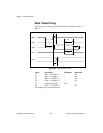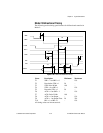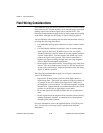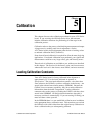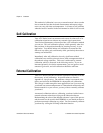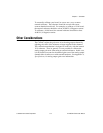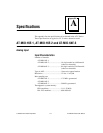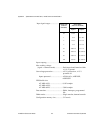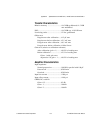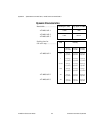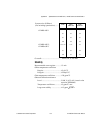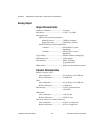
Chapter 5 Calibration
AT-MIO/AI E Series User Manual 5-2
National Instruments Corporation
This method of calibration is not very accurate because it does not take
into account the fact that the board measurement and output voltage
errors can vary with time and temperature. It is better to self-calibrate
when the board is installed in the environment in which it will be used.
Self-Calibration
Your AT E Series board can measure and correct for almost all of its
calibration-related errors without any external signal connections.
Your National Instruments software provides a self-calibration method
you can use. This self-calibration process, which generally takes less
than a minute, is the preferred method of assuring accuracy in your
application. You should initiate self-calibration to ensure that the
effects of any offset, gain, and linearity drifts, particularly those due to
warmup, are minimized.
Immediately after self-calibration, the only significant residual
calibration error could be gain error due to time or temperature drift of
the onboard voltage reference. This error is addressed by external
calibration, which is discussed in the following section. If you are
interested primarily in relative measurements, you can ignore a small
amount of gain error, and self-calibration should be sufficient.
External Calibration
Your AT E Series board has an onboard calibration reference to ensure
the accuracy of self-calibration. Its specifications are listed in
Appendix A, Specifications. The reference voltage is measured at the
factory and stored in the EEPROM for subsequent self-calibrations.
This voltage is stable enough for most applications, but if you are using
your board at an extreme temperature or if the onboard reference has not
been measured for a year or more, you may wish to externally calibrate
your board.
An external calibration refers to calibrating your board with a known
external reference rather than relying on the onboard reference.
Redetermining the value of the onboard reference is part of this process
and the results can be saved in the EEPROM, so you should not have to
perform an external calibration very often. You can externally calibrate
your board by calling the NI-DAQ calibration function.



